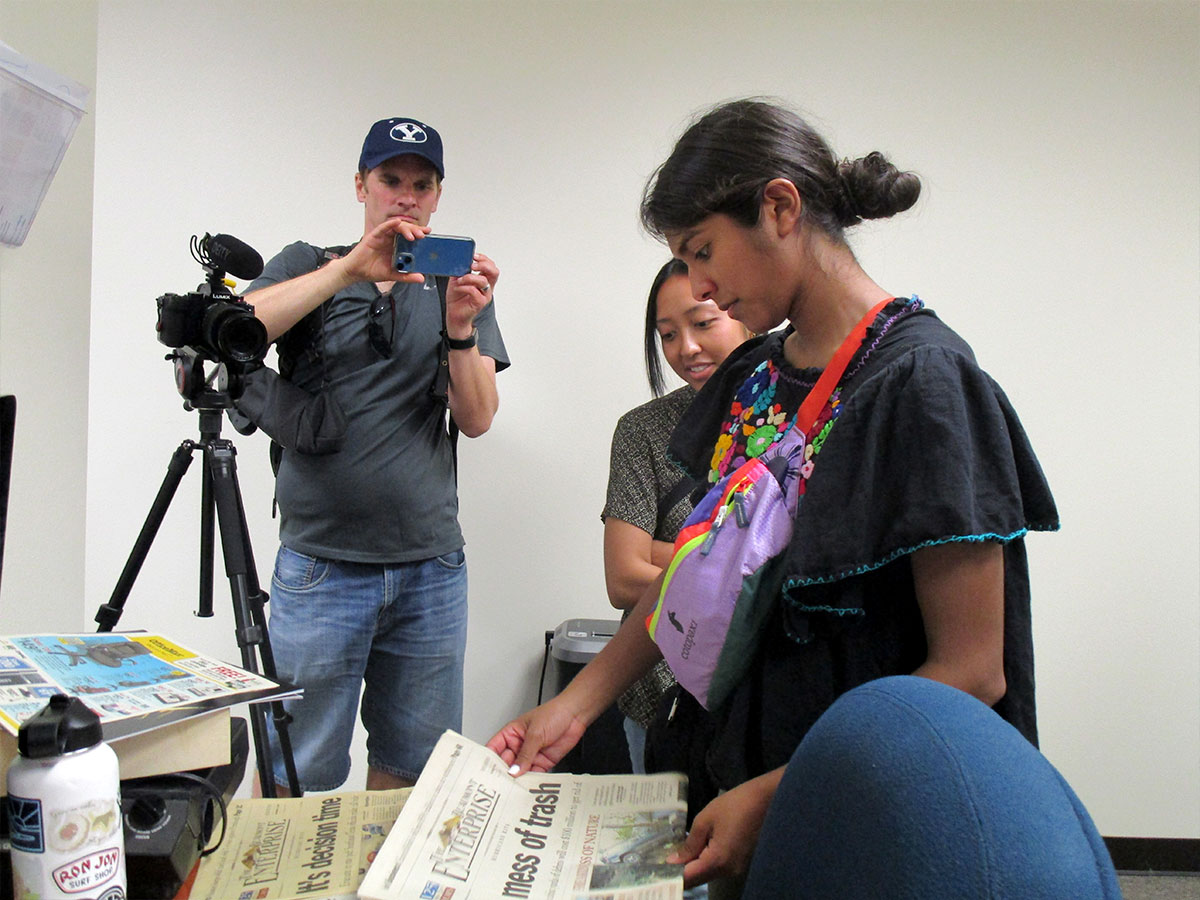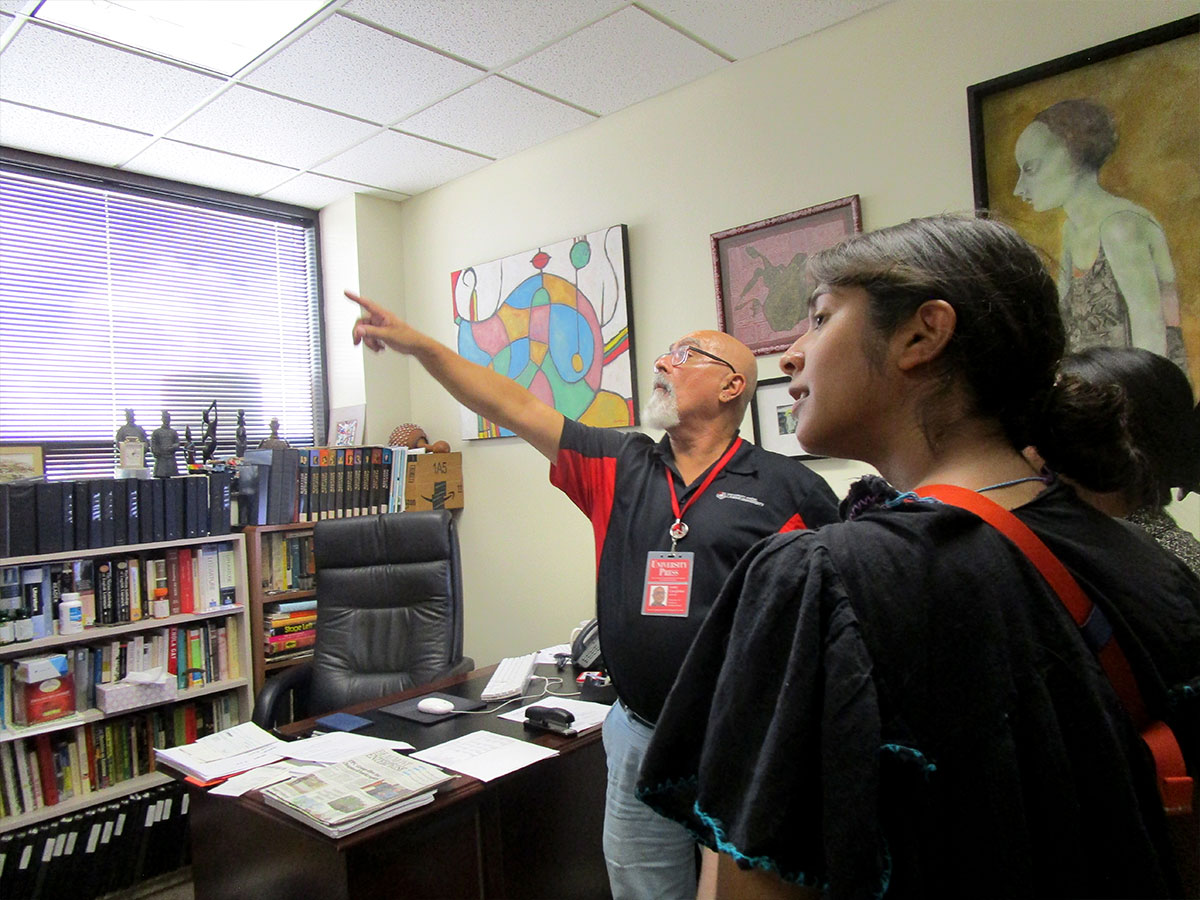
Journalism students and professors from Brigham Young University traveled to the Southeast Texas to study area resident’s resiliency dealing with hurricane recovery and disaster experiences with students and faculty from the Department of Communication and Media in association with the University Press.
During their June 2 visit to Lamar University, BYU communications students toured Lamar’s communication building, University Press, LUTV and KVLU. While touring University Press offices, the students were able to look at old issues of University Press and Beaumont Enterprise covering past storms.
The main theme of the group explored community resiliency and the effects of how these disasters impacted residents in the short-term and long-term recovery. The BYU students and their professors traveled from the Gulf of Mexico beaches to Beaumont’s own Cattail Marsh with many stops in between gathering stories during their weeklong Texas visit.
Students discussed coverage ideas and techniques ranging from cultivating interview sources to equipment set-ups on location, and how to deal with stress in crisis situations. Lamar University journalism instructor Stephan Malick said he and BYU faculty collaborated and shared ideas on ways to innovate and improve how students learn inside and outside the classroom.
“Journalism is always very hands on,” Malick said. “Journalism is about being on the scene of events and about talking to people. It’s especially difficult trying to tell any kind of story after a disaster or event for those who just experienced something like that, but also for the journalist reporting it.”
He said journalists must be prepared to think about how stories are delivered through multimedia platforms and devices. Having a plan on how to cover events is an important part of any journalism instruction and students need to learn technical skills as well interpersonal communication skill to quality stories he said.
“It’s really important for students to hear a variety on perspectives during their learning and to be exposed to collaborating with students from other institutions,” Malick said. “It’s always a good learning experience seeing how others work. There are always things for learners to take away from these sessions to apply in their own work.”
Clark Callahan, communications professor and Vidor native led the group’s research trip to Southeast Texas, comparing the field study to an abbreviated study abroad.
“This is definitely a different place than most places,” he said. “The overall goal is to look at stories surrounding the hurricanes and hurricane recovery and give the students the opportunity to get outside Provo to have experiences they wouldn’t have otherwise, cover stories that they would never be able to cover.”
Kris Boyle, BYU communications associate professor, said that the story they are working on is a field-study over different people and their stories revolving around hurricane recovery.

“People here are amazing,” he said. “Weather can be pretty tricky, that’s just how life is.”
During the Golden Triangle trip, BYU team visited Vidor and other parts of the area to interview different people over their experiences with hurricanes in the recent past such as Harvey, Imelda and all the way back to even Rita and Ike. The group interviewed Vidor mayor Misty Songe about the town’s experience with natural disasters and how there have been issues in the past over hurricane recovery and how money and politics come into play with money going to different places and favoritism.
BYU visual design major Hailey Deeds, a native of tornado-prone Missouri, said all people have their own experiences with disasters.
“People have been saying this is our home, why wouldn’t we pick up and make it look nice,” Deeds said of residents’ determination to cleanup and continue despite disaster after disaster.
“It’s a reality as you see more things and experiencing more things, you realize there’s so much out of your control,” Johnny Thomas, BYU communication studies major, said. “The only thing you can really do is live and live to the best of your abilities.”
“After speaking with people from all walks of life who have experienced hurricanes and their aftermaths, it's just like a part of life for them and, and they accept it, which I thought was really cool,” he said.
Thomas said he was impressed by people coming together and moving forward knowing it can happen again.
“The communities around here are super giving, and they help each other out,” Deeds said. “It's not just one community, it's a whole bunch of communities that forms one big community.”For more photos, click here.
